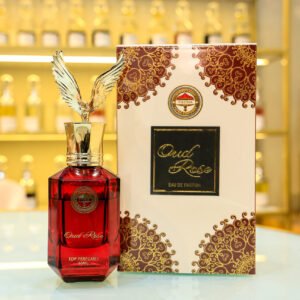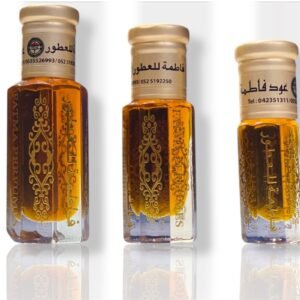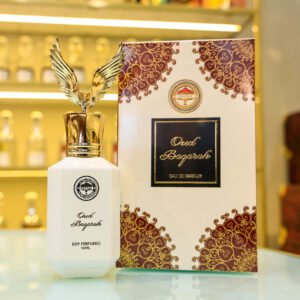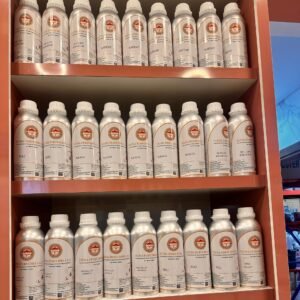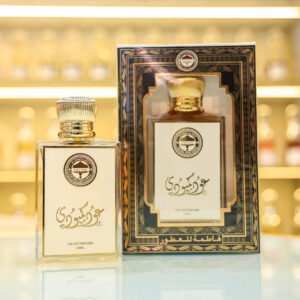Agarwood—also known as oud—is one of the most valuable natural substances in the world. But with its rising popularity, especially in regions like the UAE, it’s becoming increasingly difficult for beginners to differentiate between pure agarwood and synthetic or low-quality imitations.
In this beginner’s guide, we’ll help you understand how to spot authentic agarwood oud, the role of the agarwood tree in this process, and what you need to know about agarwood price to make smart purchasing decisions.
What Is Agarwood and Why Is It So Precious?
Agarwood is a dark, aromatic resin produced by the Aquilaria tree when it becomes infected with a particular type of mold. As a natural defense, the tree produces this rich, resinous wood that emits an incredibly deep and luxurious fragrance when burned or distilled into oil.
This resin, commonly referred to as oud or agarwood oud, is rare and difficult to harvest—making it incredibly valuable. In fact, agarwood is often called the “wood of the gods” in many cultures.
Why Is It Important to Identify Pure Agarwood?
With the global demand for oud on the rise, particularly in the Middle East and Southeast Asia, the market is flooded with:
- Low-quality agarwood soaked in synthetic oils
- Artificially darkened wood pieces
- Cheap chemical-based “oud” perfumes
If you’re new to oud or looking to buy agarwood in Dubai or elsewhere, knowing how to identify pure agarwood ensures that you’re investing in something authentic and long-lasting.
1. Look at the Wood’s Appearance
The first clue lies in the visual texture of the agarwood.
- Pure agarwood is uneven in color, typically dark brown to black, due to the resin formation.
- It will have natural, irregular patterns and resin streaks—not painted or dyed.
- The wood is dense and feels heavier than its size due to the resin content.
Tip: Hold it under light. Real agarwood pieces shimmer slightly due to natural resin deposits.
2. Perform the Water Test
Drop a small piece of agarwood into a glass of water:
- High-quality agarwood sinks, thanks to the density from resin.
- Poor-quality or untreated wood will float.
While this test is not 100% definitive (as some mid-grade pieces may float), it’s still a helpful indicator.
3. Smell the Wood Directly
Authentic agarwood has a distinct, multi-layered scent—even without burning:
- It smells warm, woody, slightly sweet, and resinous.
- The aroma is complex, often described as “mystical” or “heavenly.”
If the wood smells overly sweet, chemical, or sharp, it could be artificially soaked in synthetic oud oil.
4. Burn Test: Smell the Smoke
This is one of the most reliable tests, but it should be done carefully:
- Burn a small chip on charcoal or an electric burner.
- Pure agarwood oud releases rich, deep, and evolving layers of fragrance.
- The smoke should be smooth, not harsh or irritating to the nose.
Fake agarwood often smells chemical or overly perfumed when burned.
5. Check the Agarwood Price
Understanding agarwood price helps you identify what’s genuine.
- Pure agarwood can range anywhere from AED 500 to AED 20,000 per 10g, depending on origin and resin content.
- If someone offers you a “premium oud” for a suspiciously low price, it’s probably not pure.
Here’s a rough pricing guide for beginners:
| Grade | Approx. Price (AED) |
|---|---|
| Low Grade (commercial blend) | 100–300 / 10g |
| Medium Grade | 500–1000 / 10g |
| High-Quality Wild Oud | 2000–10,000 / 10g |
| Premium Aged Oud | 10,000+ / 10g |
Always buy from reputable oud dealers or perfume brands that clearly state the source and processing methods.
6. Understand the Source – The Agarwood Tree
Knowing the origin of the agarwood tree helps in identifying quality.
- The Aquilaria species (especially Aquilaria malaccensis and Aquilaria crassna) are known to produce high-quality oud.
- Oud from Cambodia, Assam (India), and Vietnam are highly prized.
- Plantation-grown agarwood can be genuine, but wild agarwood is usually more resin-rich and aromatic.
Dubai markets often carry varieties from all regions, so ask about the tree species and country of origin when buying.
7. Know the Different Forms of Agarwood
When shopping for agarwood oud, you’ll encounter it in different forms:
- Agarwood Chips: Best for burning; quality visible to the eye.
- Agarwood Oil (Oud Oil): Highly concentrated and expensive; be wary of diluted or mixed versions.
- Oud Perfumes: These often blend oud with floral or amber notes. Make sure the perfume contains real oud extract, not just a synthetic “oud-like” scent.
8. Certification & Lab Testing
Reputable sellers often provide:
- CITES certification (for sustainability and legality)
- Lab reports for oud oil purity
- Clear sourcing and processing details
This is especially important when you’re paying premium prices in Dubai’s luxury market.
Final Thoughts: Trust Your Senses & Source
Learning how to identify pure agarwood is part art, part science. Trust your senses—look, smell, burn, and compare. The more exposure you have to real agarwood oud, the easier it becomes to spot the difference.
In Dubai, where the oud culture is deeply ingrained, finding authentic agarwood isn’t hard if you know what to look for. Invest wisely and enjoy the timeless elegance that only true agarwood can offer.
